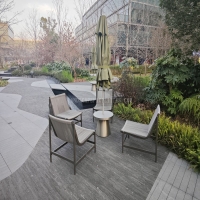Welcome to the website for landscape facilities products and knowledge.
How does the table’s design account for the need to quickly transition between individual and group presentations?
Modern table designs have revolutionized how we approach workspace functionality, particularly in addressing the crucial need for swift transitions between individual and group presentations. The fundamental innovation lies in modular table systems that incorporate transformative elements such as rotating panels, foldable sections, and reconfigurable components. These sophisticated designs allow users to instantly convert a personal workstation into a collaborative hub without disrupting workflow continuity.
Advanced table systems often feature integrated technology ports that accommodate both personal devices and group presentation tools. The incorporation of movable partitions and sliding surfaces enables users to create private working zones that can be effortlessly opened up for team interactions. Many contemporary designs employ lightweight yet durable materials that facilitate easy rearrangement while maintaining structural stability during configuration changes.
Ergonomic considerations play a vital role in these transitional designs, with adjustable height mechanisms and accessible storage solutions that serve both individual and collective needs. The strategic placement of power sources and data connectivity points throughout the table surface ensures that technological transitions occur as smoothly as the physical reconfiguration. Some innovative models even incorporate smart sensors that automatically detect configuration changes and adjust lighting or connectivity settings accordingly.
Manufacturers have developed specialized mechanisms like flip-top systems, where work surfaces can be rotated to reveal different functional sides – one optimized for individual tasks and another designed for group collaboration. The integration of mobile elements, such as castor wheels with locking systems, further enhances the flexibility, allowing tables to be quickly assembled into various formations to support different presentation styles and group sizes.
These design innovations significantly reduce the time and effort required to switch between working modes, thereby maximizing productive time and minimizing disruptions. The psychological impact is equally important – well-designed transitional spaces help users mentally shift between focused individual work and collaborative group sessions more effectively. Through thoughtful engineering and user-centered design principles, modern tables have become dynamic tools that actively support the evolving nature of contemporary work and learning environments.
Related search:

Recommendation
Metal structure rattan chair without armrests for single person, with woven seat and backrest.